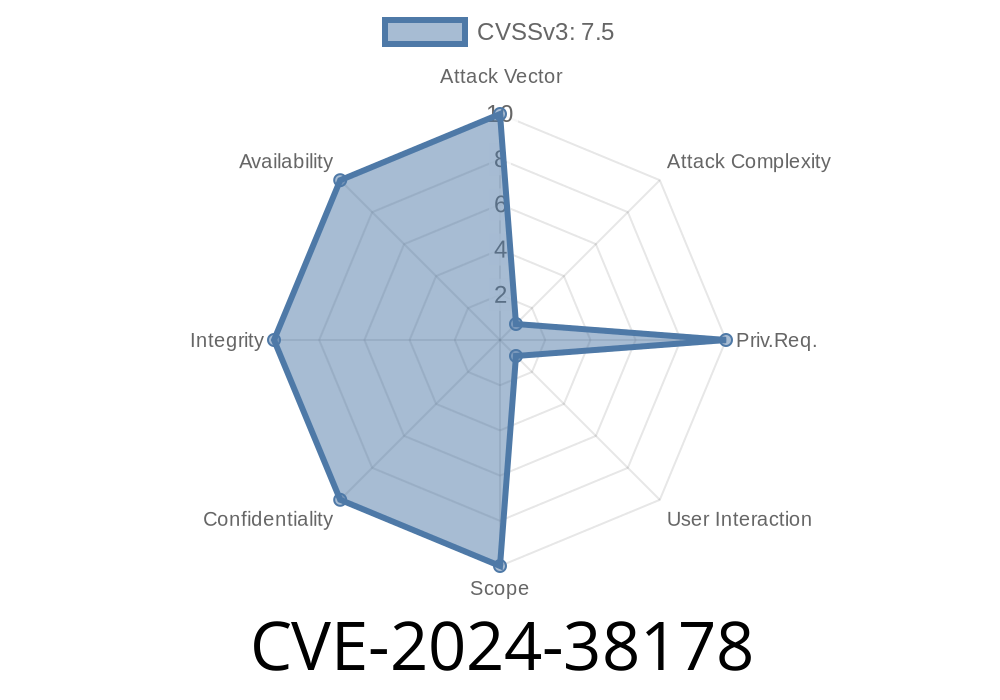CVE-2024-38178 is a high-severity memory corruption vulnerability discovered in various Microsoft Windows scripting engines. When exploited, a remote attacker can execute arbitrary code as the logged-on user, just by getting them to interact with specially crafted web content—like a web page or an email.
Vulnerabilities like this are especially dangerous because attackers don’t need physical access to your system. They can just create a malicious website or document, and if you're using a vulnerable browser or application, your computer can be hacked.
How Does the Scripting Engine Vulnerability Work?
Most browsers depend on scripting engines (like Chakra or Jscript in Internet Explorer) to run JavaScript code. If there's a bug in how the scripting engine handles JavaScript, an attacker can craft code that tricks the engine into accessing memory it's not supposed to—leading to memory corruption.
Memory corruption happens when software accidentally or maliciously accesses the wrong area of memory. It's a big problem because it allows threats like:
Steal sensitive information
TL;DR: CVE-2024-38178 lets attackers run code on your computer by sending you bad JavaScript that the browser's scripting engine can't handle safely.
Official References and Links
- Microsoft Security Guide for CVE-2024-38178
- National Vulnerability Database (NVD) Entry
- Original Microsoft Patch Tuesday Advisory (June 2024)
Simple Proof-of-Concept Exploit (for Education)
Disclaimer: This is only for educational purposes and shows the type of error involved. Don’t use this code for malicious activity.
Here’s a simplified JavaScript snippet showing what might trigger a memory corruption bug like CVE-2024-38178 (note: this is NOT the real exploit, just a demonstration based on common patterns):
// Hypothetical JavaScript snippet that could trigger a use-after-free bug
function triggerVuln() {
var arr = [1.1, 2.2, 3.3];
var evil = { valueOf: function() {
arr.length = 1; // Shrink the array during calculation
return 1;
}};
arr[2] = evil; // Overwrite arr[2] with our object
// This triggers the bug: the array manipulates during execution
var result = arr.map(function(x) { return x + 1; });
alert(result);
}
triggerVuln();
The function valueOf is called while mapping the array, shrinking the array unexpectedly.
- If the scripting engine isn't careful, it might use freed memory, leading to memory corruption (which could be turned into code execution with more work).
Real-world attackers often use such tricks in combination with heap sprays and ROP chains to take full control. For the actual CVE-2024-38178, Microsoft didn’t publish a full exploit, but security researchers have shown that similar bugs can be triggered by manipulating arrays or objects mid-execution.
How Can You Protect Yourself?
- Update immediately! Microsoft has released patches for all supported Windows versions. Go to Windows Update and install all updates.
Final Thoughts
CVE-2024-38178 represents the kind of modern browser and scripting engine vulnerability that makes Patch Tuesday so important. While the technical details are often hidden to prevent easy weaponization, researchers and attackers continue to discover variations of these bugs year after year.
If you're running Windows, especially if you use built-in browsers or legacy applications that rely on JScript or Chakra, patching is your #1 defense. Stay safe—auto-update, or patch as soon as possible, and consider using browsers like Edge or Chrome that regularly update their JavaScript engines.
Further Reading:
- Mitre CVE Details
- Microsoft Security Response Center Blog
- Why Memory Corruption Happens
Timeline
Published on: 08/13/2024 18:15:26 UTC
Last modified on: 09/17/2024 23:33:04 UTC
